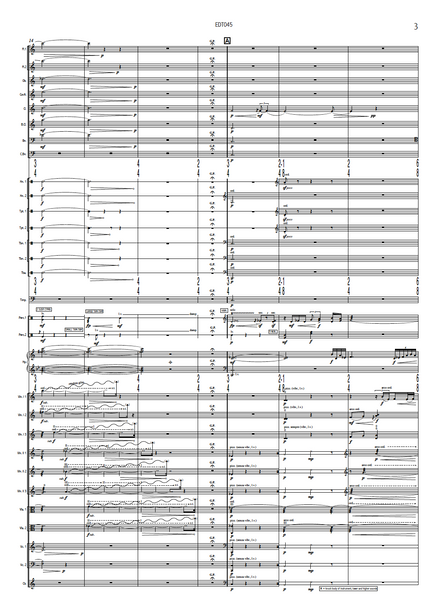RÄISÄNEN
Tomi
Magus Magnus
(2008/2017)
Musik aus Finnland gab es bereits zu Beginn des Programms mit der Orchesterfassung eines Stücks von Tomi Räisänen (*1976). „Magus Magnus“ ist eine Hommage an seinen Kompositionslehrer Magnus Lindberg, zugleich aber auch eine Paraphrase über Strukturen von Paul Dukas’ „Zauberlehrling“ – und tatsächlich ließ sich in manch quecksilbrigem Klangmoment und manch burleskem Kontrafagott-Auftritt ein Reflex auf die berühmte Dukas’sche Fantasie erahnen.
Stefan Dosch, Augsburger Allgemeine, 10.4.2018
Räisäsen Magus Magnus –teoksen lähtökohtana on Paul Dukas’n Noidan oppipoika. Se räiskähteli riehakkaasti ja kertoi metaforisesti, miten säveltäjän keksimillä motiiveilla on usein oma villi tahtonsa – pidä niitä sitten tiukassa kurissa.
Hannu-Ilari Lampila, Helsingin Sanomat, 29.6.2008
-
Orchestra: 2222/2221/12, harp, strings (2017)
-
Instrumentation: 2 Flutes (2nd doubling Piccolo), Oboe, Cor Anglais, Clarinet in Bb, Bass Clarinet, Bassoon, Contrabassoon, 2 Horns in F, 2 Trumpets in C, 2 Tenor Trombones, Tuba, Timpani, Percussion (2 players), Harp, Strings
-
Chamber orchestra version: 1111/2220/02, strings (2008)
-
Duration 8 min.
-
Dedicated to Magnus Lindberg. Commissioned by Sävellyspaja.
-
First performance of the chamber orchestra version on June 27, 2008, by Avanti! Chamber Orchestra, conducted by Dima Slobodeniouk in Porvoo, Finland
-
First performance of the orchestral version on April 9, 2018, by Augsburger Philharmoniker, conducted by Lancelot Fuhry in Augsburg, Germany
Full Score Video
Augsburger Philharmoniker performance
Description
Magus Magnus means a great sorcerer or magician. The title also translates as Magnus the Magician, which refers to Magnus Lindberg, for whose 50th birthday this piece was composed. Lindberg often takes some piece of music by another composer as a starting point for his new work. In this case, I wanted to do the same, and I chose The Sorcerer's Apprentice (1897) by Paul Dukas as the basis of the form and the "instrumental dramaturgy" if you like. On the other hand, the harmonic structure in Magus Magnus is from Lindberg’s work Corrente. Its seven pitch-class sets are circulated in the style of a chaconne similarly, as Lindberg tends to do in his many works. Magus Magnus, a mixture of magic and hypnotic dance, is dedicated to my teacher, colleague and good friend Magnus Lindberg. TR, 2008





